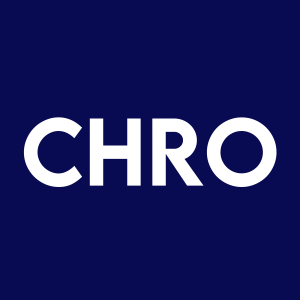Channel Therapeutics Highlights Differences Between NaV1.7 and NaV1.8 in Light of Recent Clinical Data on Suzetrigine
Rhea-AI Summary
Channel Therapeutics (NYSE: CHRO) has provided insights on the differences between NaV1.7 and NaV1.8 pain signal inhibitors, following Vertex Pharmaceutical's Phase 2 data announcement for Suzetrigine. The company emphasizes that while both are voltage-gated sodium channels in sensory neurons, NaV1.7 overexpression leads to more severe pain compared to NaV1.8's moderate pain effects.
Channel is pursuing a three-pronged approach with their NaV1.7 inhibitor: an oral treatment for neuropathic pain, an eye drop formulation for eye pain, and a slow-release depot formulation for post-surgical nerve blocks. The company expects critical data readouts in 2025 to validate their clinical development strategy.
Positive
- Company has developed three distinct NaV1.7 inhibitor formulations targeting different pain conditions
- Multiple data readouts expected in 2025
- Recent positive in vivo nerve block results
Negative
- None.
News Market Reaction 1 Alert
On the day this news was published, CHRO declined 1.45%, reflecting a mild negative market reaction.
Data tracked by StockTitan Argus on the day of publication.
FREEHOLD, N.J., Dec. 20, 2024 (GLOBE NEWSWIRE) -- Channel Therapeutics Corporation, (“Channel” or the “Company”), (NYSE American: CHRO), a pioneer in the development of non-opioid pain treatment therapeutics, is providing a statement regarding Vertex Pharmaceutical’s recently announced Phase 2 data of Suzetrigine, an investigational, oral, highly selective NaV1.8 pain signal inhibitor in people with painful lumbosacral radiculopathy.
“We are encouraged to see that the product will advance to Phase 3 trials in painful lumbosacral radiculopathy, pending discussions with regulators,” said Eric Lang, Channel’s Chief Medical Officer. “While both NaV1.7 and NaV1.8 are voltage-gated sodium channels mainly expressed in sensory neurons, there are important differences in their roles in pain transmission. Research indicates that an over expression of NaV1.8 leads to moderate pain whereas an overexpression of NaV1.7 leads to debilitating pain morbidities, and we believe that NaV1.7 inhibition may be a more potent therapy for pain treatment.”
Characteristics of Selective NaV1.7 Inhibition
- NaV1.7 is a well-studied drug target with strong genetic validation — studies of inheritable pain disorders demonstrate that the spectrum of NaV1.7 activity validates the importance of this target.
- Lack of NaV1.7 activity leads to the inability to sense pain, whereas NaV1.7 gain of function leads to severe pain. Modulation of NaV1.7, therefore, should be an effective mechanism for decreasing pain.
“Channel Therapeutics has chosen a three-pronged approach for our NaV1.7 molecule to demonstrate the utility of this target. We are utilizing an oral NaV1.7 inhibitor for the potential treatment of neuropathic pain starting with Idiopathic Small Fiber neuropathy and Erythromelalgia, a novel eye drop formulation of a NaV1.7 inhibitor to treat eye pain and a novel slow-release depot formulation NaV1.7 inhibitor for post-surgical nerve blocks,” stated Frank Knuettel II, Chief Executive Officer of Channel. “The important differences between NaV1.7 and NaV1.8 not only informs but also differentiates Channel Therapeutics’ approaches to clinical development of the Company’s selective sodium channel blockers CC8464, CT2000 and CT3000. We are very encouraged by the recent data that we have seen from our ongoing programs, including the results from our in vivo nerve block results published earlier this week. As such, we look forward to the upcoming studies and data readouts in 2025 which will serve as critical milestones for which to further substantiate the merits of Channel’s clinical development plan,” Mr. Knuettel concluded.
About Channel
Channel Therapeutics Corporation is a clinical-stage biotechnology company focused on developing and commercializing novel, non-opioid, non-addictive therapeutics to alleviate pain. The Company’s initial clinical focus is to selectively target the sodium ion-channel known as NaV1.7 for the treatment of various types of chronic pain, acute and chronic eye pain and post-surgical nerve blocks. For company updates and to learn more about Channel, visit www.channeltherapeutics.com or follow us on social media.
Forward-Looking Statements
This press release contains forward-looking statements regarding the Company’s current expectations. These forward-looking statements include, without limitation, references to the Company’s expectations regarding (i) the Company’s belief that nerve blocks with its NaV1.7 inhibitors may be viable options for the treatment of acute and postoperative pain, (ii) the Company’s belief the Company’s NaV1.7 inhibitor has the potential to improve on existing postoperative therapeutic options while opening the door for success with the Company’s other programs, (iii) the Company’s belief that the NaV1.7 inhibitor may offer a better option for post-surgical physical therapy as compared to bupivacaine, (iv) the Company’s belief that investors should feel encouraged that the Company has a strong development path towards successfully launching drugs with considerable market opportunities, and (iv) the timing of expected results on the Company’s eye drops for the treatment of various types of eye pain. These statements are not guarantees of future performance and are subject to certain risks, uncertainties and assumptions that are difficult to predict. Factors that could cause actual results to differ materially from those set forth in such forward-looking statements include, but are not limited to, risks and uncertainties related to there being no guarantee that the trading price of the Company’s Common Stock will be indicative of the Company’s value or that the Company’s Common Stock will become an attractive investment in the future. These and other risks and uncertainties are described more fully in in our filings with the U.S. Securities and Exchange Commission. The information in this press release is provided only as of the date of this press release, and we undertake no obligation to update any forward-looking statements contained in this press release based on new information, future events, or otherwise, except as required by law.
Channel Media and Investor Inquiries:
Mike Moyer
Managing Director, LifeSci Advisors, LLC
mmoyer@lifesciadvisors.com









